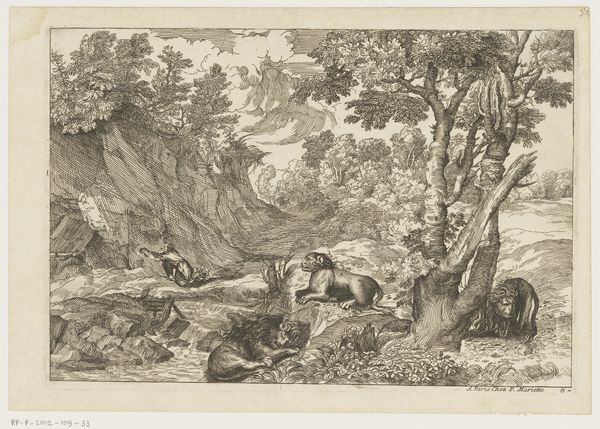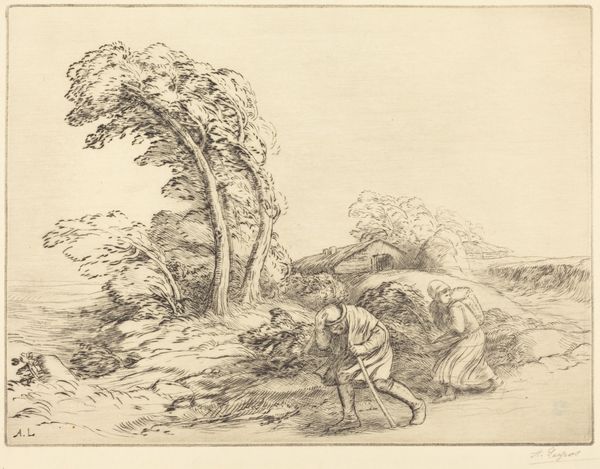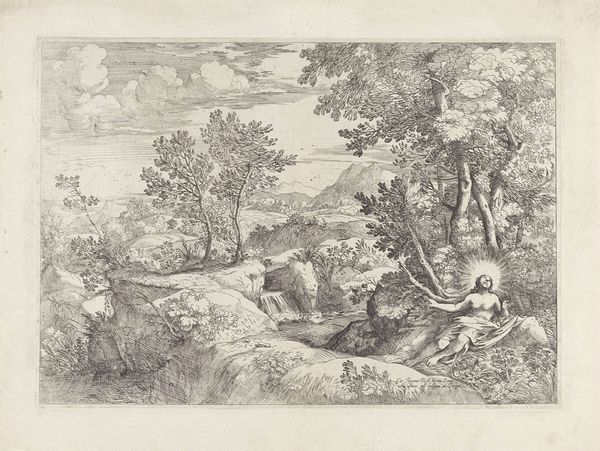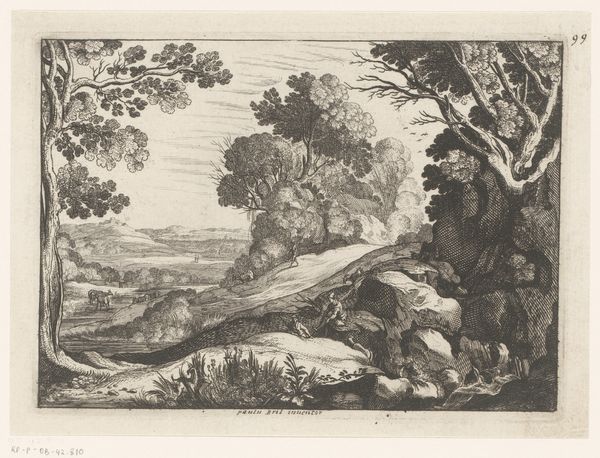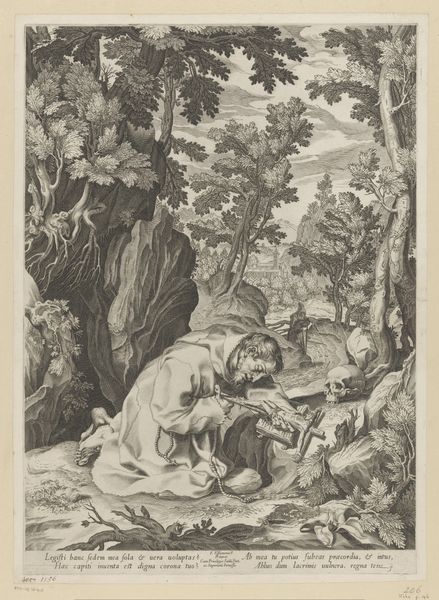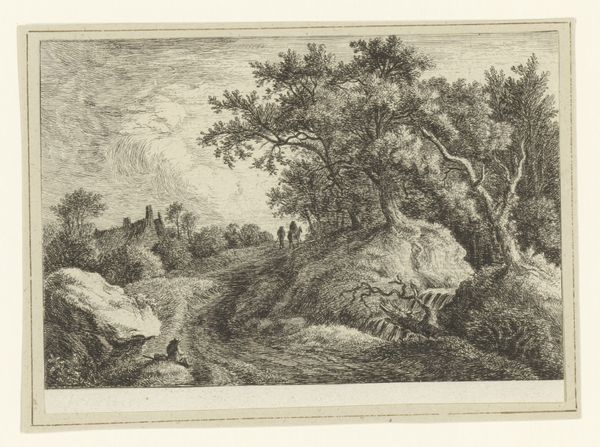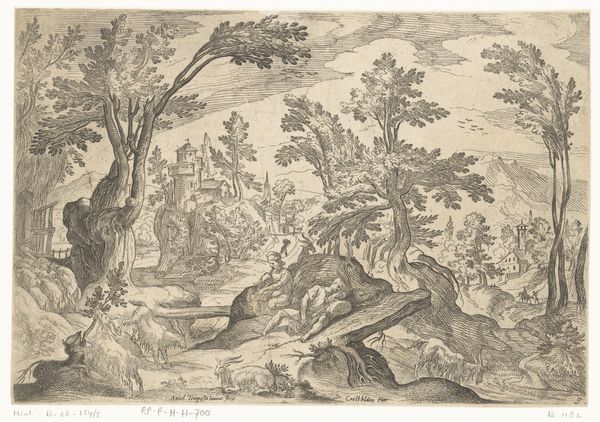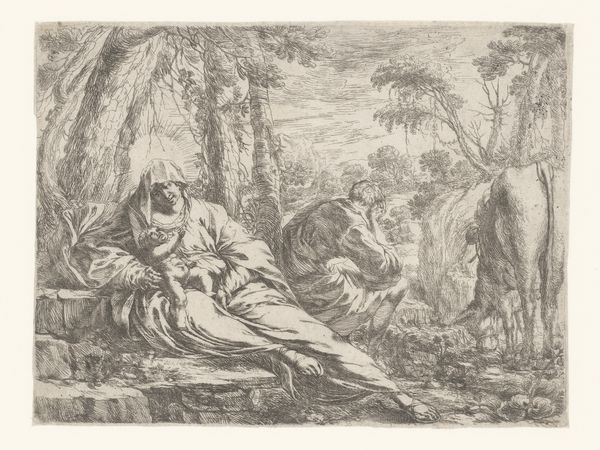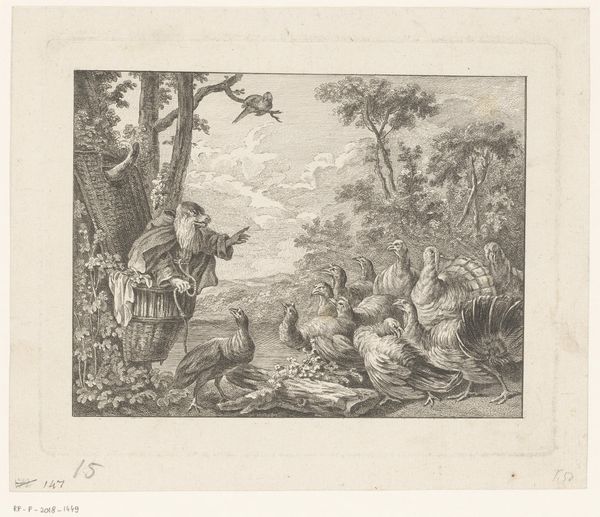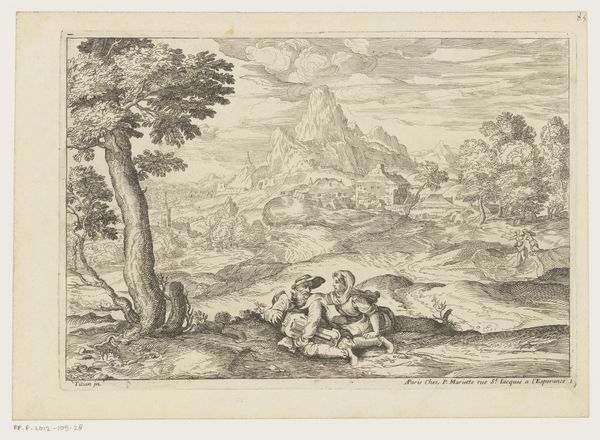
drawing, pencil, engraving
#
drawing
#
baroque
#
pencil sketch
#
landscape
#
charcoal drawing
#
pencil drawing
#
pencil
#
engraving
Dimensions: height 238 mm, width 317 mm
Copyright: Rijks Museum: Open Domain
Editor: This is *Hunting Dog and Prey with Hare and Birds*, an engraving or pencil drawing from the Baroque period, made somewhere between 1725 and 1790 by Johann Georg Wachsschlunger. I'm struck by how serene it feels, despite depicting the spoils of a hunt. What aspects of the artwork capture your attention? Curator: For me, it's the emphasis on the process and material conditions surrounding this image that speaks volumes. Consider the act of hunting itself, not as a noble pursuit, but as a means of acquiring resources, a form of labor intrinsically linked to survival. Editor: So, are you suggesting the engraving transforms hunting from a recreational sport of the wealthy into commentary about material needs? Curator: Precisely! Look at the *materials* involved. Why an engraving, a medium reproducible and accessible? It removes this imagery from the sole domain of the aristocracy, making it available, commodifiable. Ask yourself, who was buying such prints, and what purpose did they serve in their lives? What does this say about the evolving roles and access to art? Editor: That's an interesting angle. The focus isn’t so much on artistic expression as on production and consumption. How does the depiction of animals – the dog, the hare, the birds – fit into this materialist reading? Curator: The animals, like the tools used in the hunt, are reduced to commodities. The dog isn't portrayed as a loyal companion but as a tool, while the hare and birds are simply food, products extracted from the environment. There's a raw functionality on display, isn't there? Consider, also, how the rendering, although skilled, doesn't strive for idealized beauty. Editor: I see what you mean. So, moving beyond a traditional aesthetic interpretation, this engraving acts as a document reflecting material conditions, production methods, and social access of the time. That's a new perspective for me. Thanks! Curator: It invites us to question what we consider art, who gets to make it, who consumes it, and for what purpose, doesn't it? Food for thought, literally and figuratively!
Comments
No comments
Be the first to comment and join the conversation on the ultimate creative platform.
